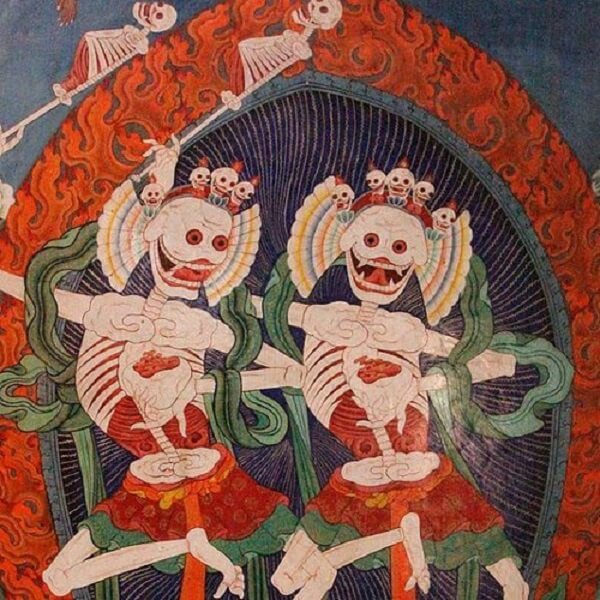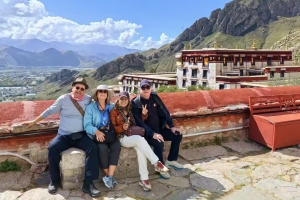Brief Introduction
Tibetan culture is deeply influenced by the philosophical tenets of Tibetan Buddhism and the ancient Bon tradition. Within this context, apparitions of the dead hold significant meaning, serving as manifestations of karmic connections and reflections of spiritual transitions. These phenomena represent the blurred boundaries between the living and the departed, illustrating the cyclical nature of life, death, and the spiritual journey. In Tibetan thought, apparitions are interpreted with both fear and reverence, tied to specific rituals and imbued with profound significance.
Historical and Religious Foundations
The beliefs surrounding apparitions in Tibetan culture originate from the introduction of Buddhism in the 7th century, which integrated seamlessly with the pre-existing Bon tradition. A key text, the Bardo Thodol (commonly known as the Tibetan Book of the Dead), describes the intermediate state between death and rebirth, where consciousness is liberated from the physical body. During this period, individuals encounter various visions and spectres. These experiences are often regarded as internal projections but can manifest outwardly in the form of apparitions to those still living. The Bon cosmology, with its rich depictions of spiritual realms and ancestral ties, complements this Buddhist perspective, creating a complex narrative where apparitions are a vital part of existence.

Forms and Significance of Apparitions
Apparitions in Tibetan culture come in various forms, each with distinct meanings. Some are experienced as peaceful visitations from loved ones, providing comfort and closure. In contrast, others may appear as unsettling figures, reflecting unresolved karma or improper ritual practices. Regardless of their nature, these apparitions serve as powerful reminders of the impermanence of life and the enduring nature of karmic connections.
Ritual Responses to Apparitions
In Tibetan culture, the appearance of an apparition is not dismissed as mere superstition; rather, it is viewed as a significant occurrence that requires a response. Rituals play a crucial role in addressing these manifestations. Monks and lamas conduct puja ceremonies, utilizing mantras and invoking protective deities to assist wandering spirits in finding peace. Families often prepare offerings of food, incense, and ritual cakes to appease the departed and help them sever earthly ties. The recitation of the Bardo Thodol acts as a spiritual guide for the dead, facilitating their journey towards liberation and favourable rebirth. Additionally, practices like sky burial—where the body is offered to the elements—carry profound meaning in releasing the spirit.

Apparitions in Folklore and Moral Lessons
Tales of apparitions are prevalent in Tibetan folklore, often presenting vivid narratives that contain moral lessons and cultural insights. These stories passed down through generations, highlight the consequences of one’s actions, the significance of karma, and the interconnectedness of all living beings. Through these narratives, apparitions serve not only as reflections of the deceased’s presence but also as mirrors of the living’s ethical responsibilities.
Contemporary Interpretations
In contemporary Tibetan society, the understanding and interpretation of apparitions continue to evolve. Some view these phenomena through spiritual frameworks, while others analyze them from psychological or symbolic perspectives. Nevertheless, the essence remains constant: apparitions encapsulate the interconnectedness of existence and highlight the responsibilities of the living toward the deceased.

Conclusion
In Tibetan culture, apparitions of the dead represent more than mere fear or fascination. They are profound reflections of the human experience, which encompass the complexities of life and death through a lens of compassion, ritualistic practice, and philosophical insight. These manifestations reveal a world where the distinctions between the seen and unseen converge, prompting the living to engage in reflection, response, and remembrance. Tibetans’ beliefs about apparitions, shaped through centuries of cultural and spiritual evolution, provide valuable insights into the intricate relationship between mortality and transcendence.










